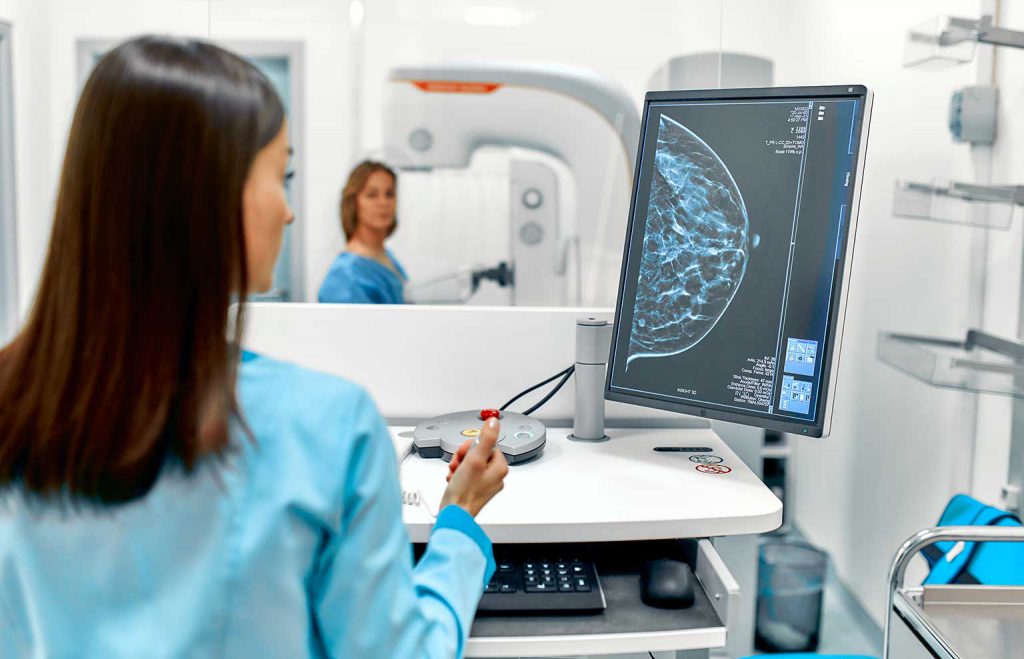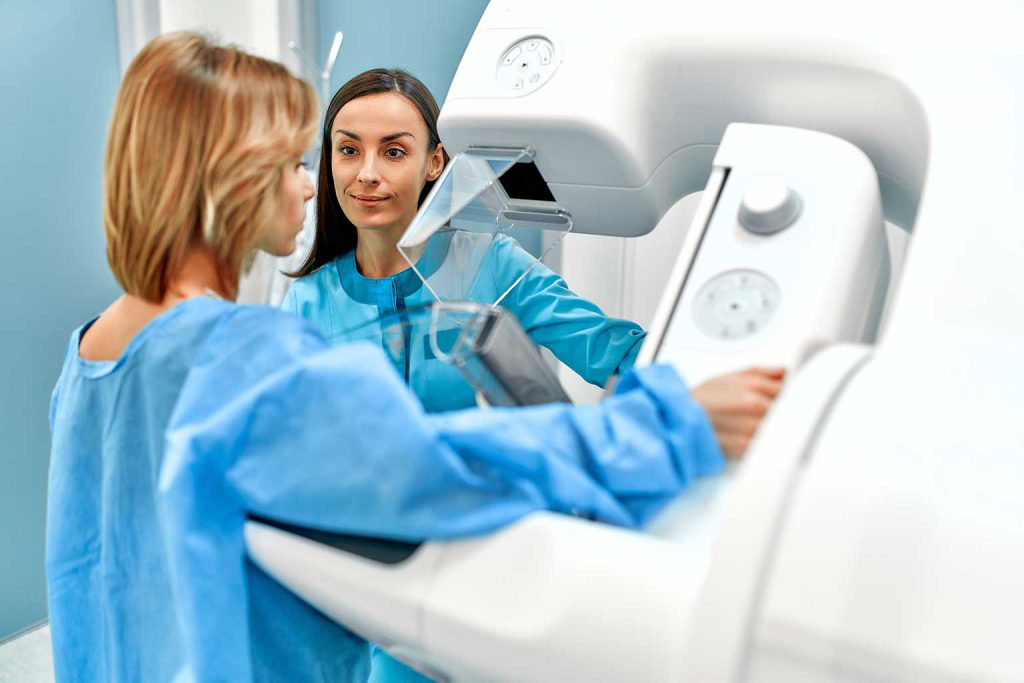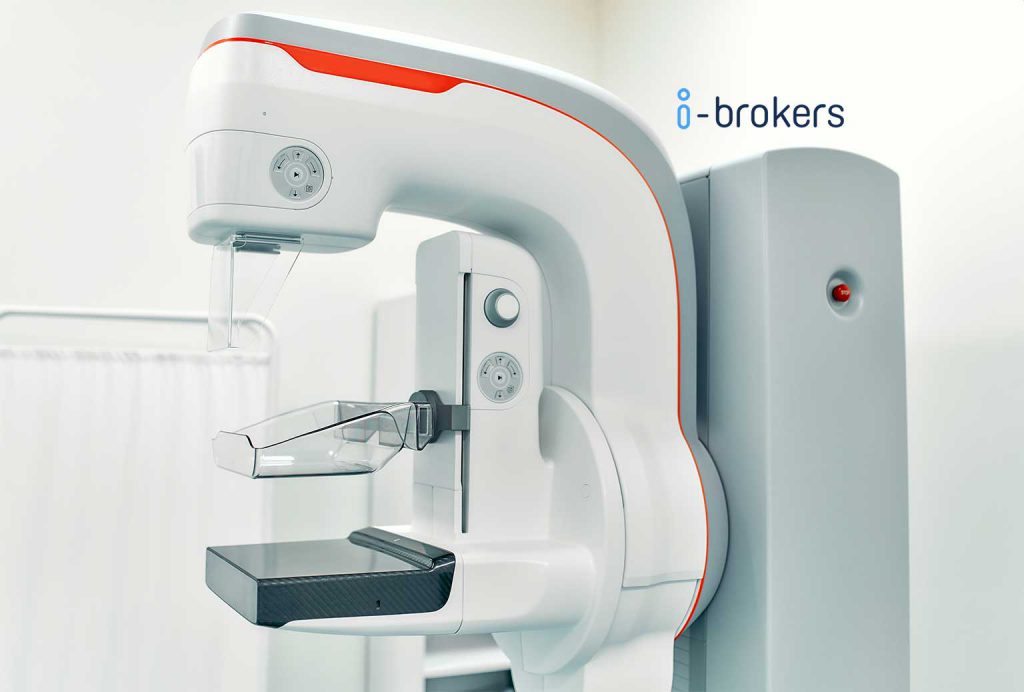Whether you’ve received a mammogram in the past or your first time is around the corner, it can be stressful leading up to the screening.
Typically, mammograms are painless, and they can potentially assist you in detecting breast cancer in its early stages.
In this blog post, we are going to share with you when you should have your first mammogram and how often you should have follow-ups to maintain your breast health.
Table of contents
- What is a mammogram?
- Mammogram guidelines
- Women ages 40 to 49 with average risk
- Annually
- Based on individual choice and factors
- Every 2 years
- Key Point
- Women ages 50 to 74 with average risk
- Annually
- Every 2 years
- Key Point
- Women ages 75 or older with average risk
- • Continuing regular screenings
- • Benefits compared to risks of this test are unknown
- • Talking with your doctor
- What age do you stop getting mammograms?
- Who should do this?
- What about radiation?
What is a mammogram?
A mammogram is an X-ray picture of the breast that’s typically used by physicians to look for the early signs of breast cancer.
Mammogram guidelines
There are a number of different variables to consider when it comes to having a mammogram, ranging from your age to your family history of breast cancer and other cancers.
There are several guidelines that vary, depending on the source you consult. Let’s look at how the risk factors, as well as age, play a role in guidance.
Women ages 40 to 49 with average risk
Here’s an overview of recommendations:
Annually
In accordance with the American Cancer Society (ACS), women within this age group should start having annual breast cancer screenings via mammograms.
Specifically, women ages 45 to 49 should have mammograms every year.
Based on individual choice and factors
The U.S. Preventive Services Task Force (USPSTF) and the American Academy of Family Physicians (AAFP) deviate slightly from recommending annual checks.
They both state the decision to have a mammogram in this age group (ages 40 to 49) is an individual one.
Every 2 years
Similarly, the American College of Physicians (ACP) states that women of average risk who are ages 40 to 49 should weigh the harms and benefits.
ACP recommends this age group screen with mammography every 2 years if they decide on this option.
Key Point
Consider your family’s and your own health history and talk with your doctor so you can decide when and how often to test. The most common recommendation is to have your first mammogram in your 40s.

Women ages 50 to 74 with average risk
Here’s an overview of recommendations:
Annually
The ACOG and ACR both suggest an annual mammography screening.
The ACS states that women ages 50 to 54 should get mammograms annually, but those who are ages 55 and older should switch to mammograms every 2 years.
Every 2 years
Several health organizations recommend mammography screening every 2 years for women with average risk within this age group.
The IARC recommends women ages 50 to 69 have routine mammograms. This agency doesn’t recommend mammography screenings for women ages 70 to 74.
Key Point
For women ages 50 to 74, most mammography guidance recommends screenings every year or every 2 years. The International Agency for Research on Cancer (IARC) deviates in that it doesn’t recommend mammography screenings for those who are ages 70 and older.
Women ages 75 or older with average risk
Guidance for this age group differs the most. For women ages 75 and older, here are things to consider:
• Continuing regular screenings
The ACS recommends screening to continue so long as you are in good health.
• Benefits compared to risks of this test are unknown
The USPSTF says there’s insufficient evidence to assess the balance of benefits and harms of screening at this age, and the AAFP makes the same statement.
• Talking with your doctor
The ACOG suggests that women should speak with their healthcare provider. The ACP doesn’t recommend screenings at all.
What age do you stop getting mammograms?
According to some agencies, like the American College of Physicians (ACOP), they do not recommend mammography screenings after age 75 for women with average risk.
Women at a higher than average risk
While there are differences in the advice that organizations give regarding women who are at a higher risk of developing breast cancer, some general guidance includes:
• Start screenings by age 40, if not earlier.
• Get a mammogram and an MRI.
• Get screened annually.
• Discuss your medical history and individual situation with your healthcare provider.

Who should do this?
Those with close relatives who’ve had breast cancer. The USPSTF recommends that women who have a parent, sibling, or child who has been diagnosed with breast cancer consider starting screenings in their 40s. The ACS recommends annual mammograms for women who fall into this category and consideration of having a breast MRI for some individuals.
Those who have BRCA gene mutations. The ACS, ACOG, and the ACR also suggest an annual mammography screening and MRI.
Those with a family history of breast cancer. Those who have a male or female parent, sibling, or child who’s had breast cancer are at higher risk.
The benefit of mammograms
The main benefit of having a mammogram is that you can potentially diagnose breast cancer in its early stages.
For women, this means that they may be able to be treated for the disease through less invasive means. Localized cancer cells might be removable without a mastectomy.
The drawbacks of mammograms
Mammography screenings can be stressful for some people simply from the anticipation, discomfort, or other feelings the experience brings up.
One of the biggest limitations of mammograms is that they’re not perfect.
Normal breast tissue can potentially hide cancer and prevent it from showing up in an average mammogram, resulting in what is called a false-negative result.
What to expect from a mammogram
The person being screened is asked to stand in front of a special X-ray machine while a technologist places the breast on a clear plastic plate.
Another plate firmly presses the breast down from above to flatten it while the X-ray is being taken. These steps are repeated on the sides of the breasts to create a more comprehensive view.
What about radiation?
While it’s true that mammograms involve some radiation. Radiation exposure should not be a concern for you if you’re having a mammogram.
A mammography screening involves less radiation than a standard chest X-ray.
For women, this means that they may be able to be treated for the disease through less invasive means. Localized cancer cells might be removable without a mastectomy.
When you need more than a mammogram
Here are other tests that your doctor may order:
Diagnostic mammogram
In some cases, your doctor may recommend a diagnostic mammogram following your initial screening mammogram. This is another X-ray, but it’s done to study specific areas of interest.
A radiologist is typically on hand to help the technologist, who operates the mammography machine. The goal is to get all of the images they need to accurately analyze the breast tissue.
Ultrasound and MRI
An ultrasound may be used to look more closely at any changes that are seen on the mammogram.
In addition, some women are encouraged to have an MRI to help their doctor get a more comprehensive view of the area.
In cases for people who have undergone a mastectomy or who’ve had breast reductions, mammograms are still typically effective as a screening test, but it’s possible an ultrasound or MRI screening may also be recommended.


